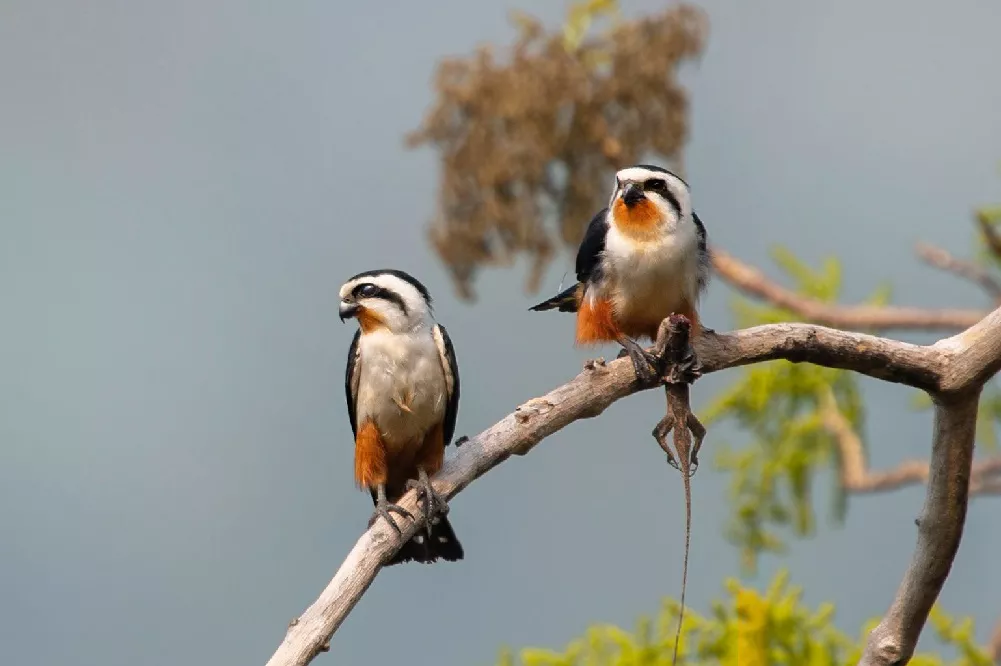The Collared Falconet, scientifically known as Microhierax caerulescens, is a small bird of prey found in the tropical regions of Southeast Asia. These birds are known for their agile hunting abilities and are skilled at catching prey both in the air and on the ground. In this article, we will provide a detailed description of the diet of the Collared Falconet.
Insects
The primary diet of the Collared Falconet consists of insects, which make up a significant portion of their daily food intake. They hunt and consume a wide variety of insects, including beetles, grasshoppers, cicadas, and butterflies. Insects provide the bird with a rich source of protein, which is essential for maintaining its energy levels and overall health. The Collared Falconet is known to have a particular preference for termites, which it will consume exclusively during certain times of the year.
Small birds
Small birds also form an important part of the Collared Falconet’s diet. They prey on smaller bird species such as sunbirds, flowerpeckers, and munias. The Collared Falconet’s exceptional agility and speed enable it to take down birds that are larger than itself. The bird usually ambushes its prey from a hidden perch, swooping down to catch it in mid-air or on the ground.
Small reptiles
The Collared Falconet is also known to prey on reptiles, including lizards and geckos. These are usually smaller species, although the bird has been known to take down larger reptiles on occasion. The bird’s diet is highly adaptable, and it will adjust its feeding habits to suit the prey that is most readily available.
Small mammals
In addition to the above, the Collared Falconet has also been observed consuming small mammals, such as bats and rodents. However, these are relatively rare occurrences and are not a significant part of the bird’s diet.
The Collared Falconet uses a variety of hunting techniques to catch its prey. It typically perches on a high vantage point, scanning the area for potential prey. Once it spots a target, it flies down at high speed, using its sharp talons to grab its prey. The bird is also capable of hovering in mid-air, allowing it to catch insects on the wing.
In conclusion, the Collared Falconet is a versatile predator that feeds on a variety of prey, including insects, small birds, and reptiles. Its diet is highly adaptable, and it will adjust its feeding habits to suit the prey that is most readily available. The bird’s exceptional hunting abilities make it a formidable predator that can take down prey larger than itself. Understanding the Collared Falconet’s diet is essential for conservation efforts, as it can help identify the bird’s habitat and inform strategies for its protection.
Related topics


 Facebook
Facebook  Instagram
Instagram  Youtube
Youtube 